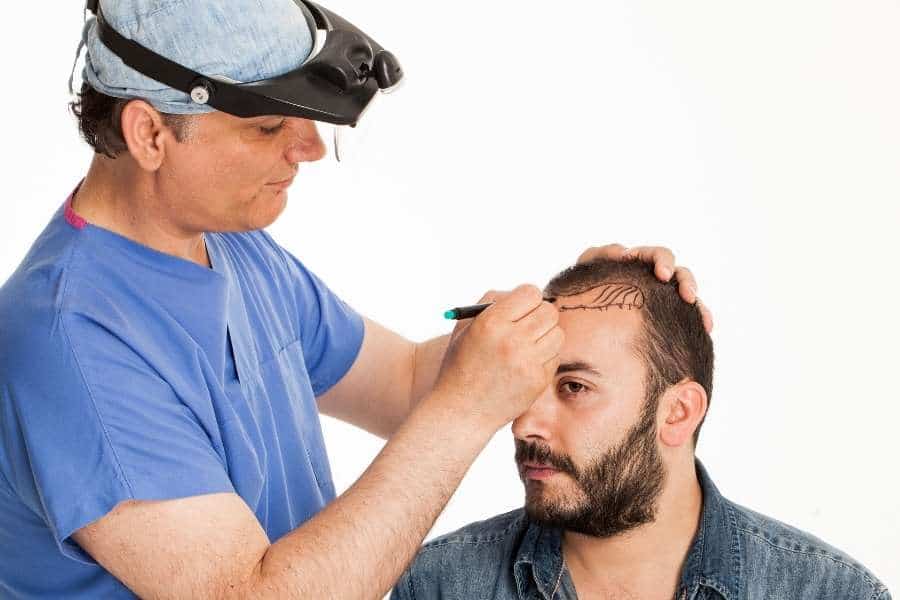For most people, a hair transplant is a life-changing experience. It gives them a sense of confidence and self-esteem.
However, it is essential to note that the journey of undergoing hair transplantation is not without its emotional obstacles. In this blog post, we will explore the different stages of this journey.
Pre-operative
Hair transplantation is a surgical procedure that moves healthy hairs from one part of your scalp to areas with less or no hair. It can improve the appearance of balding and create a more natural-looking head of hair. However, it cannot stop additional hair loss. Therefore, you should stabilize your hair loss with medications before seeking this treatment.
Before the surgery, your healthcare provider cleans and injects medicine into your scalp. They then choose to do follicular unit strip surgery (FUSS) or follicular unit extraction (FUE). In FUSS, your doctor removes a 6- to 10-inch strip of skin from the back of your scalp. Then they sew it closed. You can expect to feel strong tugging and pressure at this point.
In FUE, your healthcare provider uses a tube-like instrument to remove tiny pieces of skin with healthy hairs. They then place the grafts in the area of your scalp that needs them. The procedure may take a few hours.
It would be best to avoid smoking before and after the procedure, as it can decrease blood flow to your scalp and limit nutrient delivery to your hair follicles. Avoid alcohol and caffeine, as they can affect the effectiveness of the local anesthetic that your doctor gives you before the operation. Understanding that the new hair will shed for a few weeks after your surgery is also essential. This is not a sign of failure but rather that the new follicles adjust to their new home.
Intra-operative
The surgeon will numb the scalp with local anesthesia before starting. They will then make minor cuts or slits in your scalp’s bald or hair-loss area or remove some healthy skin from the back and sides of your head (also called the donor areas) to serve as a transplant base. They will carefully transplant the healthy hair follicles from the donor areas to the bald or hair-loss area or add them to an existing hairline.
During this phase, your doctor may recommend a medicine that reduces further hair loss or encourages regrowth, such as minoxidil and finasteride. You should follow these instructions closely to benefit from your procedure the most.
After the donor areas are prepared, a medical practitioner uses a tube-like instrument to punch round grafts from your skin. They will then transplant these grafts to the bald or hair transplant timeline areas of your scalp, called the treatment area. They can transplant hundreds or even thousands of grafts during one session.
For patients who undergo flap surgery, a medical practitioner places balloon-like devices (called tissue expanders) under the skin of the hair-bearing section of your scalp. These expand over time, encouraging the scalp to grow more hair-bearing skin. The surgeon then moves this skin to cover your scalp’s bald or thinning section and stitches it into place.
Post-operative
A hair transplant involves moving healthy follicles from dense areas of the scalp (often called the donor area) to the treatment area where you want to grow new hair. Unlike in the past, when surgeons moved tufts of hair, which often did not look natural, modern techniques are much more sophisticated.
Before the surgery, you will be given injections of a local anaesthetic and pain-relieving tablets. You will then sit in a chair while the dermatologist carefully extracts your hair-bearing follicles. Once this is done, they will be cooled and stored until they are ready for implantation.
The procedure can take four to eight hours, depending on how much is being transplanted. During this time, you can watch TV or listen to music. Once the operation is over, you will be given clear instructions for aftercare. Most patients can rest and recover at home. If the surgical site has non-dissolvable stitches, they must be removed after ten days.
After the surgery, your new hair will grow and appear thicker and fuller. This process may take up to 12 months. Your doctor may also recommend that you take medicine to help prevent future hair loss and thinning, which can occur even after a successful hair transplant.
Long-term
A hair transplant moves healthy hairs from a part of your scalp that still has its natural supply of healthy hair growth to areas of the head that are bald or thinning. A medical procedure dermatologists or plastic surgeons generally perform it. It cannot create new hair but enhance what’s left to make you look and feel great about yourself.
A more traditional type of surgical hair restoration is known as follicular unit transplantation (FUT). This treatment removes a strip of skin from the back of your head and then stitches it. Then, small cuts are made in the scalp, where healthy hair follicles will be moved. This can take a few hours for a single session or even longer for a mega session of thousands of grafts.
The best hair transplant results are achieved using techniques that mimic how your hair grows. Thanks to advances in sculpting the hairline and placing transplanted hairs, your result can be so natural that barbers and stylists will never know it’s not your natural hair.
The most crucial step is choosing an experienced surgeon with a track record of happy patients. It’s also good to research online and find a clinic that uses a surgeon with a high graft survival rate.




